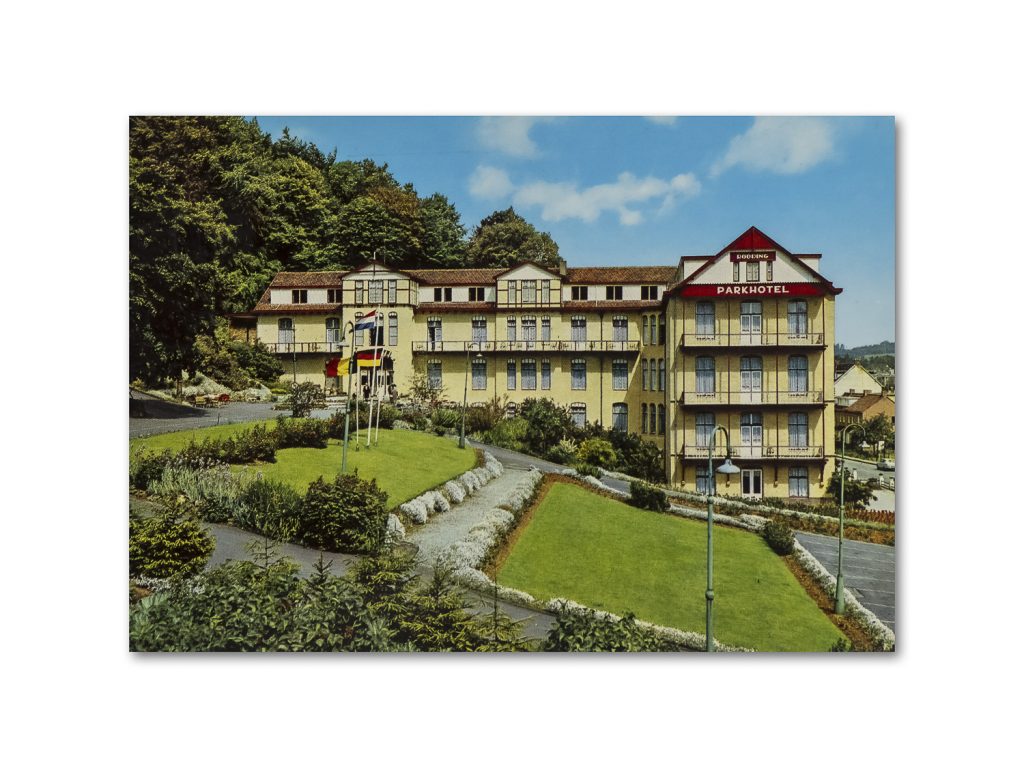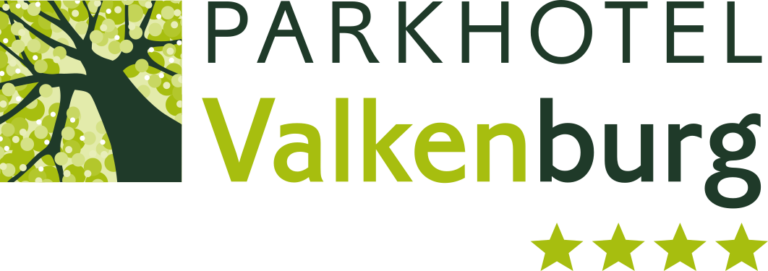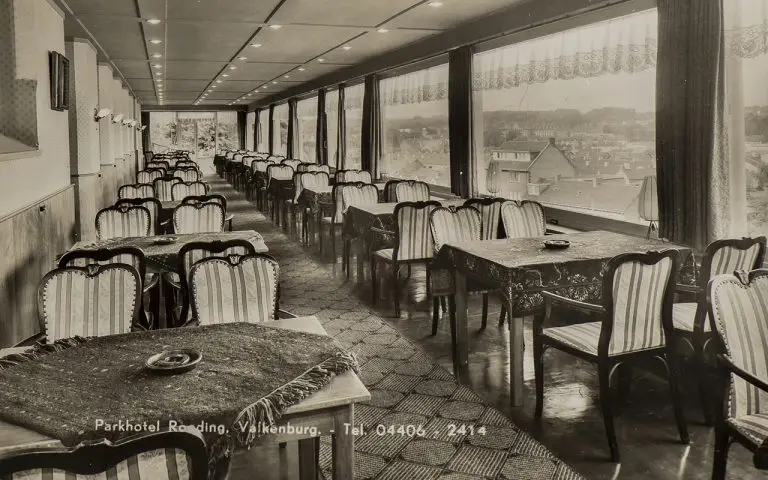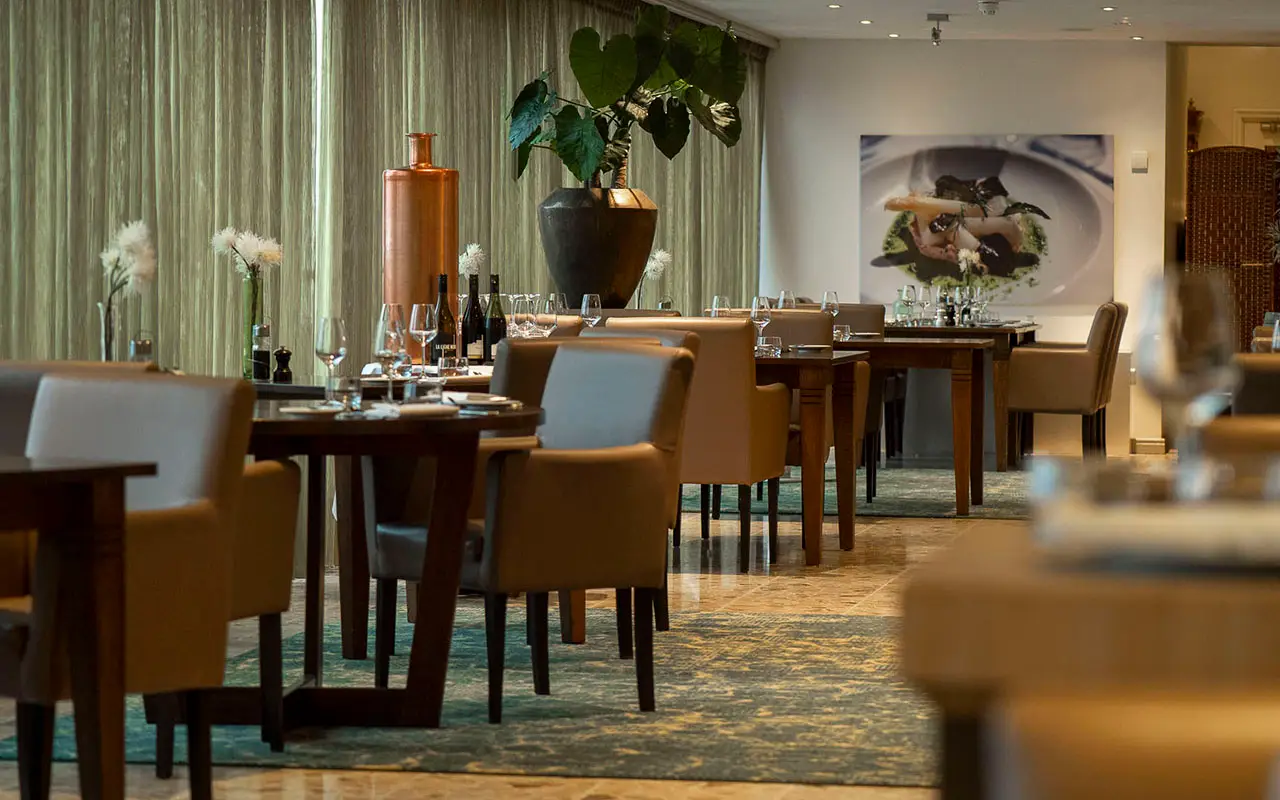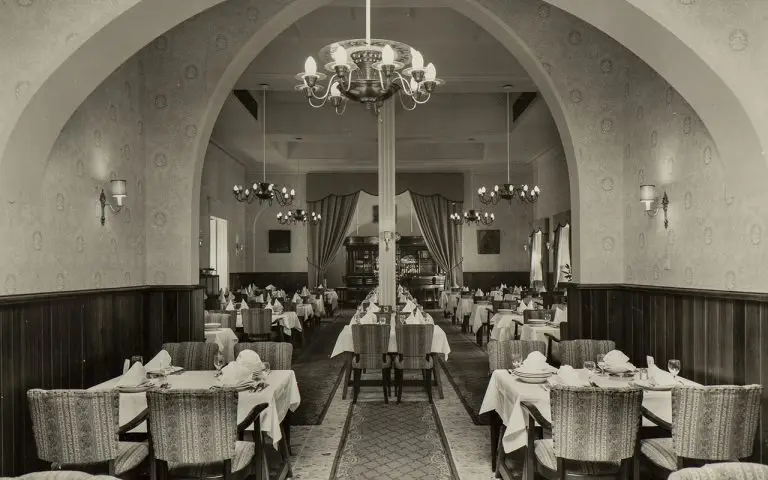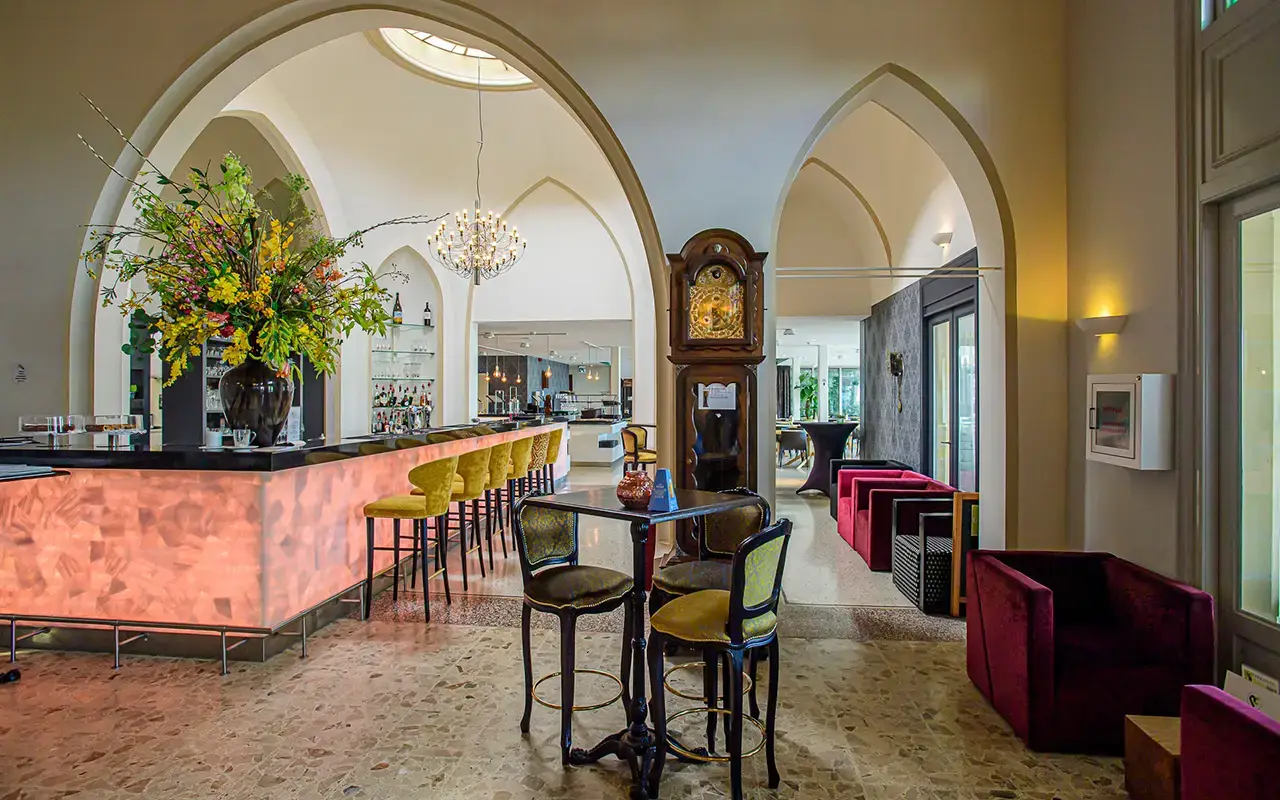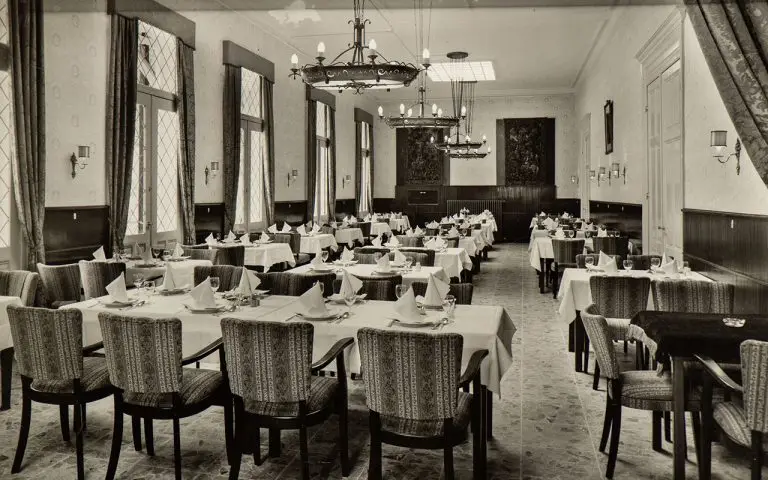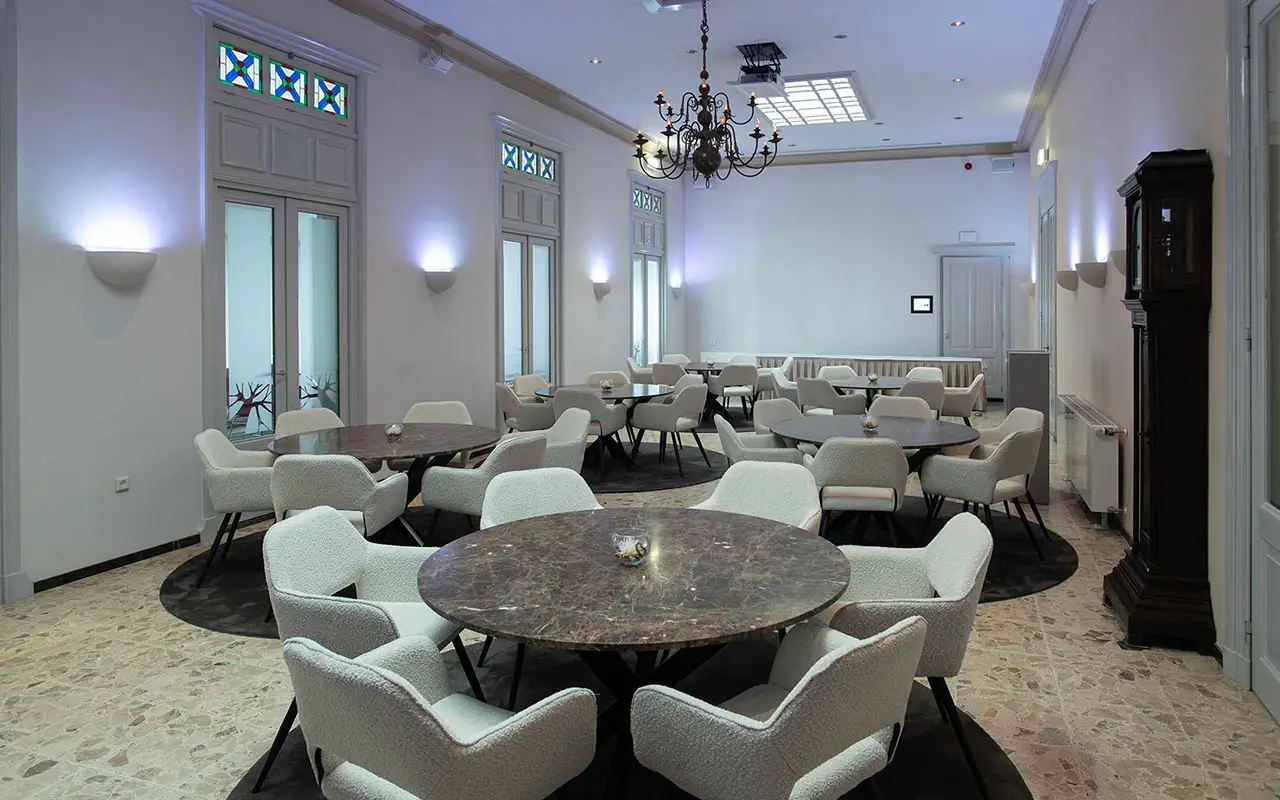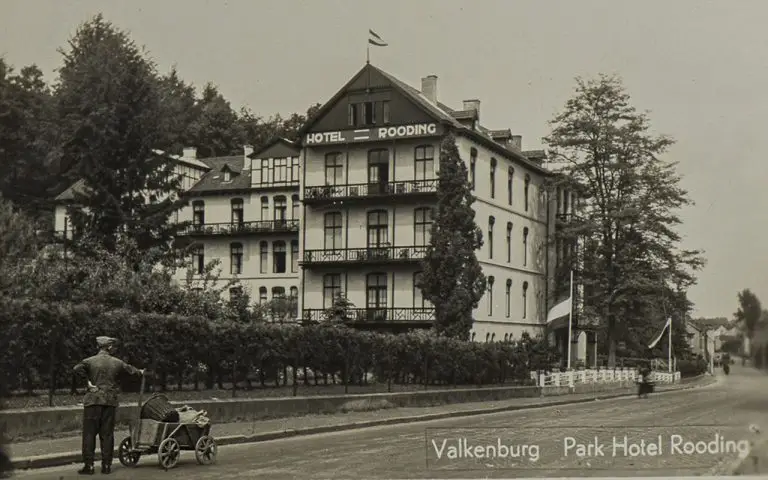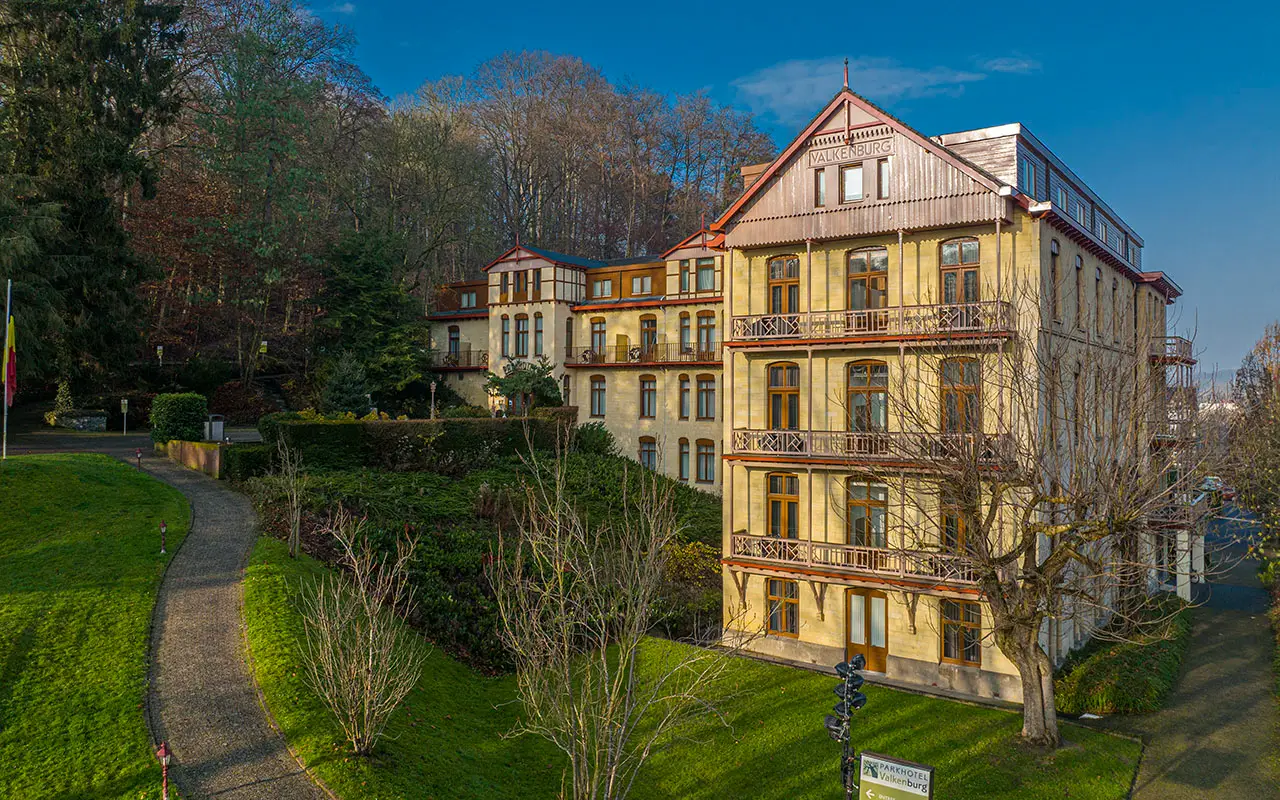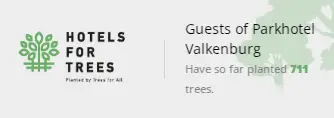History
Parkhotel Valkenburg
Since 1892
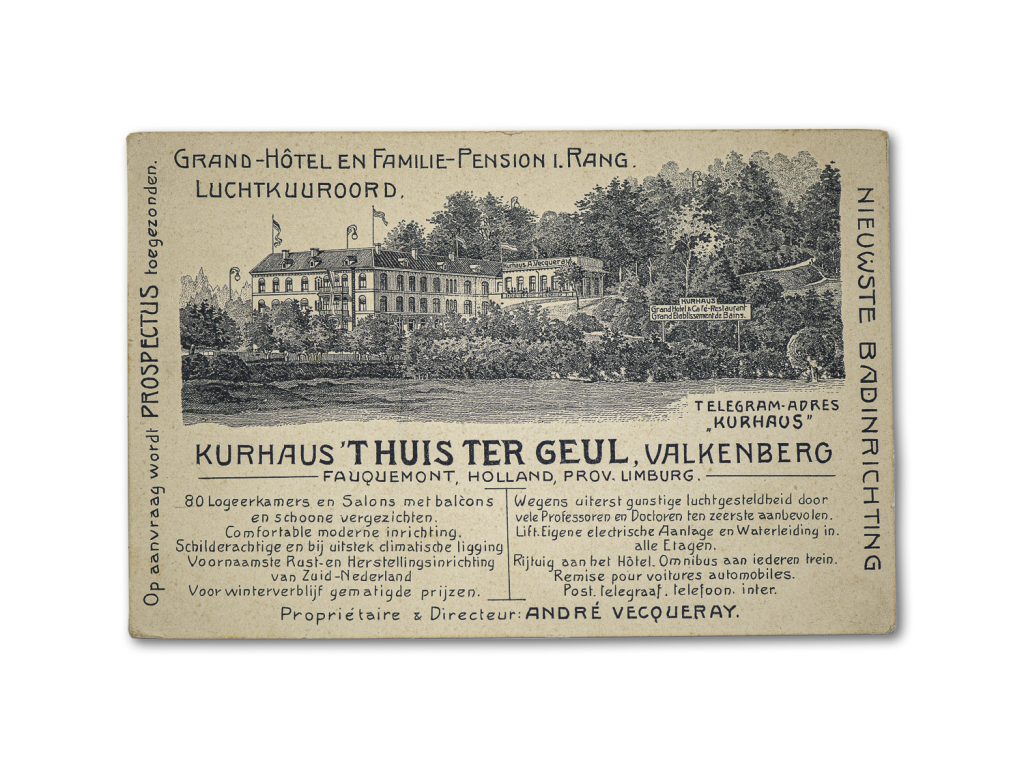
Following the German example
Highly topical in those days was the “spa idea,” which at the time was also causing a furor especially in Germany. There, hot and cold water baths, mud baths, etc. were elevated to beneficial spa methods. Healthy Limburg air had long been Valkenburg’s slogan number one. One had even had scientific research done on the air with the goal of advertising with the results of the research.
So no means were shunned to make Valkenburg a veritable “Spa”. This following the German example.
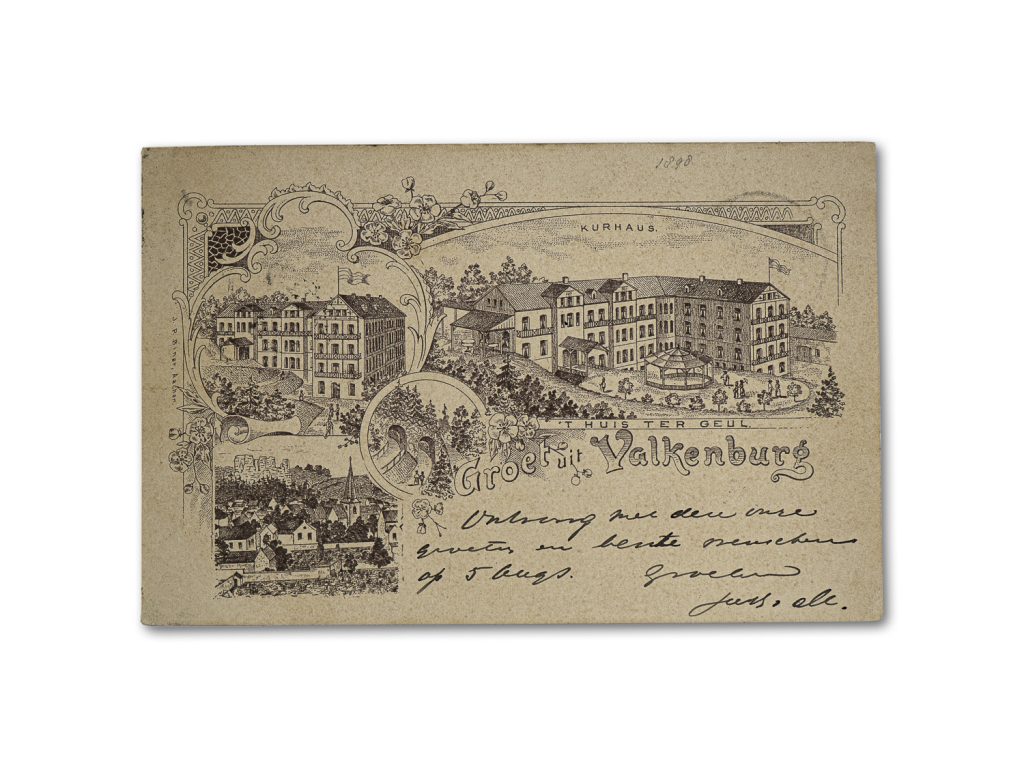
Another report states.
“The tests by the later Sanatorium `t Huis-ter-Geul, as well as by the first operator of the Palanka bathing hotel, proved the pessimists who did not want to believe in the viability of a public bathing establishment one hundred percent right.”
1890, The formation of the Limited Liability Company
Be that as it may, the idea that such a spa had to be successful nevertheless gained ground and, as mentioned, the limited liability company was established in 1890. The founders were prominent citizens. Their names are found in the founding document. Mr. R.J.C Loisel – mayor of Valkenburg, G.G.A Schwartz – former colonel, F.G. van Delden – former president, J.J Langenhoff – missionary, Mr. Schwartz – former president, Mr. Langenhoff – former president, Mr. Langenhoff – former missionary. G.R.A. Lemmens – cantonal judge in Gulpen, Jonkheer Mr. Lemmens. L.H.L. van der Maesen de Sombreff – cantonal judge in Heerlen, F.J.Th. Beukman – former chief engineer, J.F. Plet – former officer of health (who had apparently changed his mind, therefore), J. Noordraven – HBS teacher, G. Ackens – pharmacist, J.Collard – East Indian official and last but not least Dr. P.J.H. Pierre Cuypers – architect and State Architect.
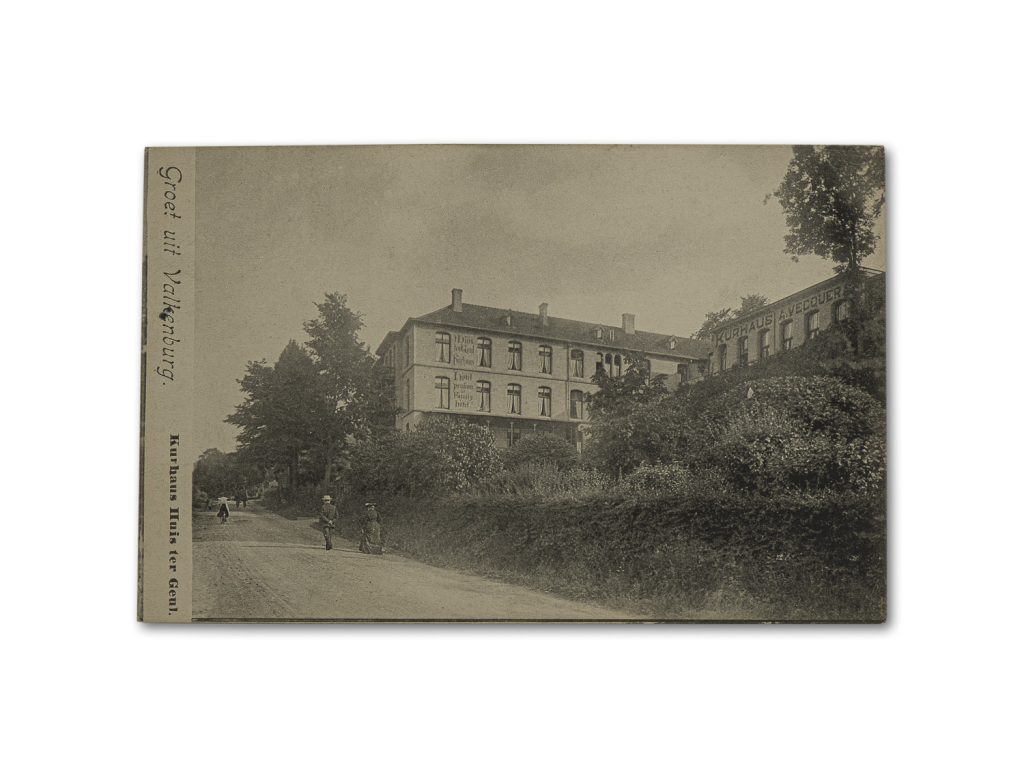
In the brochure issued on , "The House on Geul," the promoters stated
“Because of the amazing increase in the number of visitors in the last few years; because of the great and rightly deserved appreciation of these visitors for this region; because of the favourable effect that a stay here has had on the health of all; but above all because of the conviction, born of many well-founded suggestions and remarks by lodge members, that Valkenburg, at this moment, is no longer capable of accommodating all its guests in the way they would wish. (….) The general opinion, including that of physicians, in this region is, that the best and healthiest place in the already by itself healthy and free of malaria fumes Geul Valley was chosen. (….)
According to the doctor’s opinion, the illnesses for which the climate of Valkenburg is particularly favorable and treatment can be sought in “Huis ter Geul” are the following: illnesses of the nervous system (melancholy, hysteria, psychic excitement or depression of the slightest degree, various convulsive states, peripheral paralysis, nervous heart palpitations, nervous feeding disorders, nervous pains of various kinds, nervousness, nervous weakness, etc.), furthermore stomach and lower abdominal pains, chronic catarrh of the respiratory tract as well as of the digestive and sexual apparatus, ashtma, obesity, haemorrhage, chlamydia, chlamydia, etc.), stomach and lower abdominal ailments, chronic catarrh of the respiratory tract as well as the digestive and sexual apparatus, ashtma, obesity, haemorrhoid ailments, chronic rheumatism, slight heart defects, gout, pallor and diabetes of light degree, anemia and scrofula.
”The basis of treatment is hydrotherapy. In addition, all types of baths are provided, such as cold and hot, full-half and sitting baths, pine needle baths, roman-irish baths, vapor baths.”
“Finally, as a recommendation,” the initiators believed “the following points may be highlighted:
- That Holland possesses in Valkenburg a mountainous region, which is not inferior to, indeed, according to many, preferable to several well-known and busy seaside resorts along the Rhine;
- That the free Dutchman can remain in his free country and will not have to examine at every footstep whether putting down the following might also attract police penalties:
and - That the prices are lower than anywhere else.”
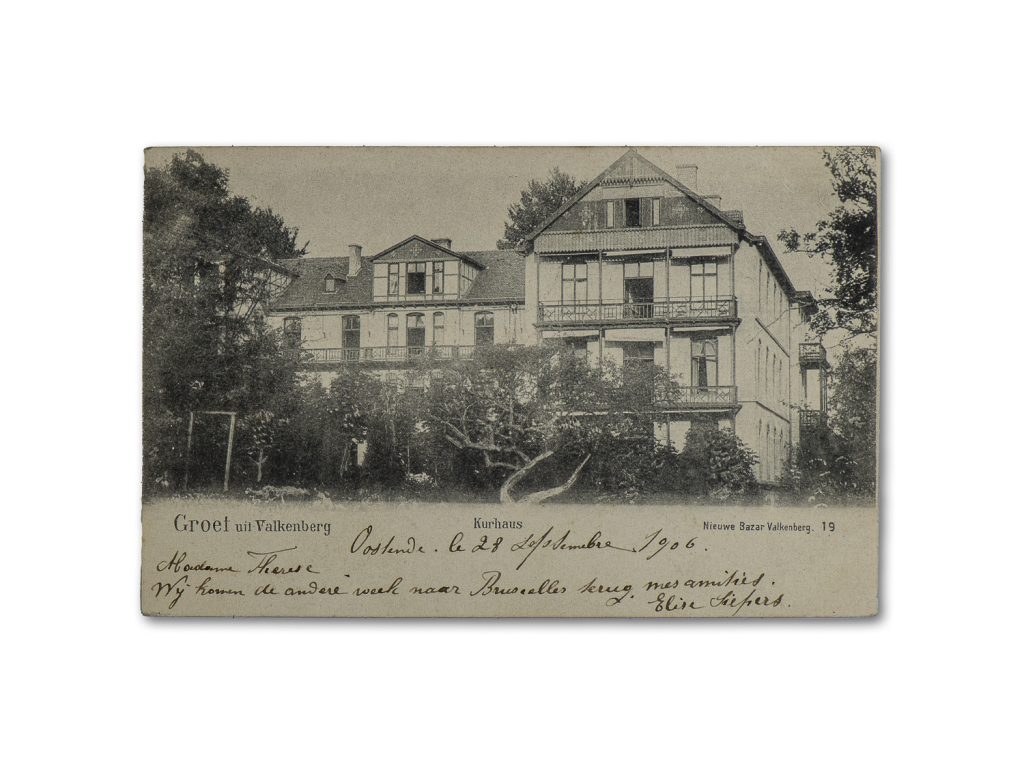
Queen Emma and 14-year-old Wilhelmina
In the spring of 1895, a rumor suddenly spread in Valkenburg. Both queens, the then 36-year-old Queen Regent Emma and the still underage; queen Wilhelmina (14), who became queen after her father’s death in 1890 – will come to Valkenburg to stay. Contacts were made by the court with the management of the then almost three-year-old ‘Kurhaus – Huis ter Geul’.
The Valkenburg City Council, in its meeting of May 13, 1885, passes a resolution, granting the College of B. and W. an undetermined credit for the “Queen’s festivities. Not only Valkenburg runs out of money. All of Limburg is pleasantly surprised with the royal visit. In those days something of a VVV already existed. The VVV Het Geuldal offered the royal highnesses two copies of the ‘Officieelen Gids van Valkenburg en het Geuldal’. A historic moment for that time. It was party time in Valkenburg.
The Kurhaus `t Huis-ter-Geul experiences a highlight with this visit, which is not surpassed in later years. A highlight in the volatile and curious history of this stylish building, which later became hotel, then monastery and finally hotel again: Parkhotel Rooding and now Parkhotel Valkenburg.

1939 - Parkhotel Rooding
After 28 years, in 1939 the Fathers left again. The successful Valkenburg hotelier Johan Rooding, saw something in the building. What had proved impossible for decades, he now considered possible. Johan Rooding had the experience and he a his family knew how to do it. He trusted that with his knowledge and skill, and of course with a little luck, he could breathe new life into the hotel.
Johan Rooding was born in Domburg, Zeeland. In 1917, he had ended up in Limburg by accident. His brother, who was running a business in Heerlen at the time, had invited him to come and have a look in Limburg. Johan Rooding was a pâtissier and cook. He had already worked in many places in the Netherlands. This is also how he found work in Valkenburg. Here he liked it so much that he decided to stay. In 1917, he worked as a cook at hotel L`Empereur in Valkenburg.
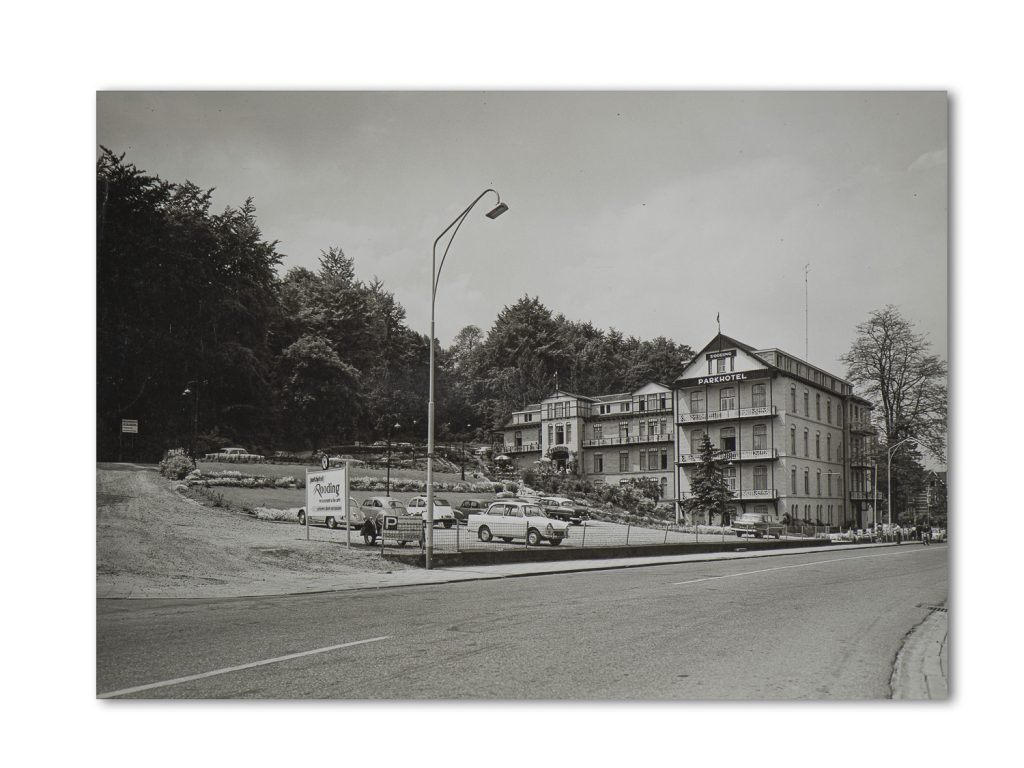
Johan Rooding, Smart and Business
Smart and businesslike, that was Johan Rooding. The hotel business makes good money during the season. But those earnings often have to be addressed in winter. Johan was an entrepreneur pur sang. He realized he had to have a source of income during the winter months. He was originally a pâtissier and cook. So those qualities were put to use.
Johan Rooding the pâtissier got to work. With the help of his wife and eldest sons, large quantities of chocolate, chocolates and confectionery were made. This was sold around the holidays such as St. Nicholas and Christmas.
But chef Johan Rooding wasn’t sitting still either. With broadcast dinners and cooking jobs here and there, he made the lost winter season productive. Most importantly, the Rooding family did not have to tap into the money earned in the summer during the winter. That was often different with colleagues anyway.

Johan Rooding was ready for it!
Huis ter Geul was originally a hotel/spa resort. Johan Rooding had not forgotten that. It required considerable investment but he could see it all over the place. He had a nose for what would attract tourists.
The beautiful views from the bedrooms. Terraces and conservatories on the Geul valley and views of the picturesque town of Valkenburg. The view of the beautiful Geböschke and the Heunsberg, the Schaesberg, the Däölkesberg, the Goudsberg and the Biebos and the Sint Jansbos. The medieval castles of Genhoes and Schaloen were part of the setting of his Park Hotel. Johan Rooding was ready.
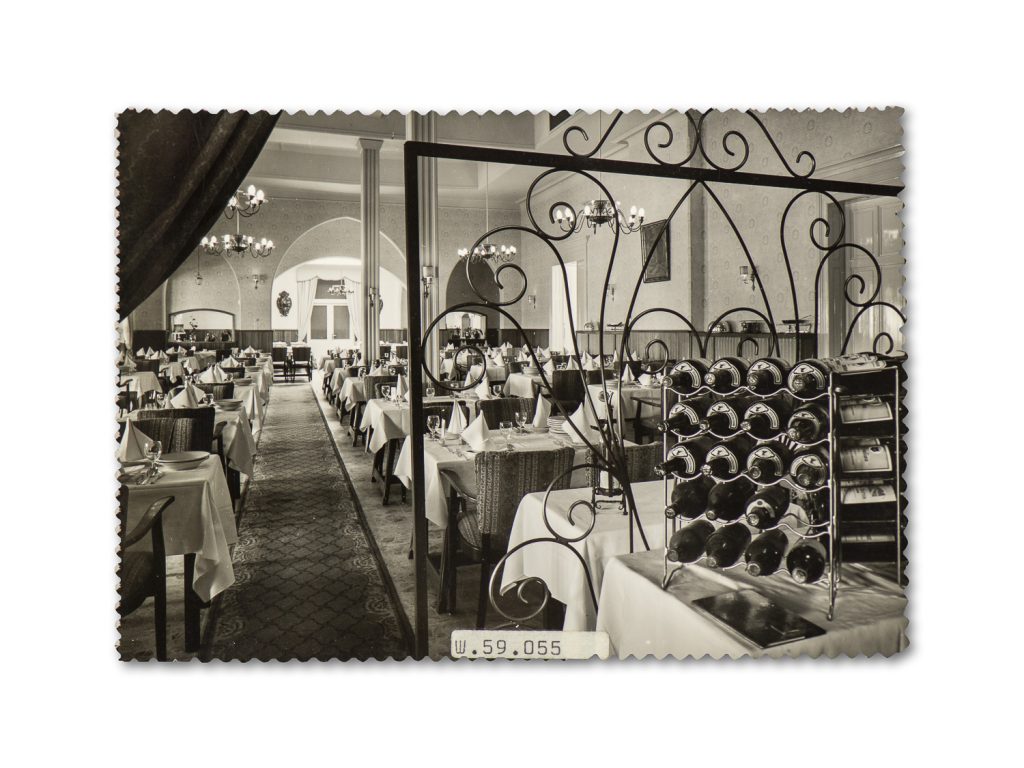
Parkhotel Rooding comes to fruition
After World War II, Parkhotel Rooding really flourished. Mr. and Mrs. Rooding’s plans were all successively realized.
The spacious and especially distinct Parkhotel, which always retained something of the “Kurhaus style,” became more beautiful than ever before. Substantial investments were made each year. Its regal location in the middle of the park gave Parkhotel its image. Garden and terraces, the five-story monumental building had a capacity of no less than 16,000 m³ at the time. Both the exterior and interior of the Parkhotel made it the jewel in the crown of Valkenburg’s hotel industry.
1960 - Son Albert Rooding
Of the founders of the Kurhaus, no one is still alive. The Fathers who inhabited the building scattered all over the world. Johan Rooding died in 1972. As early as 1960, the management of the company had passed into the hands of one of Johan’s five sons, Albert Rooding. The other sons also became hoteliers. Still today, even in fourth generation several grandchildren of Johan and Sietske Rooding-Scheepstra are independent entrepreneurs in the hospitality industry
Parkhotel Rooding comes to fruition
Parkhotel Rooding underwent several expansions and improvements. In 1957, a large conservatory was added against the forest slope overlooking the Geul Valley. In 1961, they expanded the lodging accommodation by 20 rooms. In 1968 the elevator was put into operation.
The 1970s were characterized by the new architecture of the huge garden and the modernization of all 90 rooms, which were equipped with bath or shower and toilet.
A separate new building arose, housing a large number of garages.
Parkhotel Valkenburg, a home for everyone
An elevated terrace with meeting room was added in 1981. In each case, it was the idea underlying the former Kurhaus that prompted costly modifications and renovations. Parkhotel Rooding remained a House, where both the individual guest felt pleasantly at home, but also where participants of congresses, symposia and other meetings liked to stay.
Once the Kurhaus “Huis-ter-Geul” occupied a progressive place in the “hospitality field,” at a time when the acronym “Hospitality” was not even used. The line set out by Johan Rooding in 1940 could be continued. To this day, it is the traditions of hospitality and gastronomy that characterize the qualities of our hotel.
Parkhotel Rooding comes to fruition….
By deed dated February 1, 1890
By deed of February 1, 1890, the “N.V. Maatschappij tot Exploitatie van een rust- en herstellingsinrichting te Valkenburg of aangrenzende streek” was founded.
There were few hotels in Valkenburg at that time. And the hotels that were there were not prepared for the growing interest of tourists.
Not only were there too few rooms available in Valkenburg, but there was a lack of comfort. Those who went on vacation in those days were wealthy and therefore used to some things. While the Valkenburg hotels were hospitable and had good cuisine, they lacked comforts.
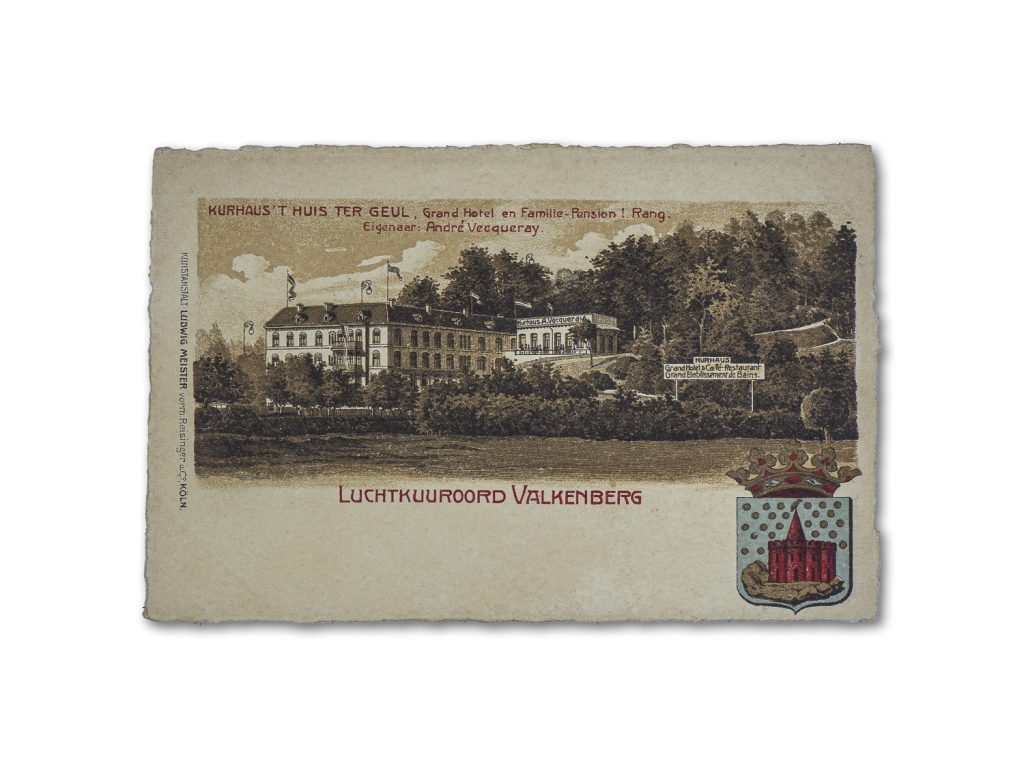
A quote as an example from a report of the VVV Het Geuldal
”A special general meeting was held to discuss the possibility of the existence of a public bathing facility. The chairman announces the actual purpose of the meeting, which is to bring the Cold Water or Bathing Facility, already discussed earlier, back on the carpet.
Especially through Dr. Plet, masses of objections to a possible foundation of such an institution are being raised and the matter is getting nowhere. Nevertheless, it is decided not to completely abandon the idea of a Kaltwasser Heil-Anstalt to be founded here.”
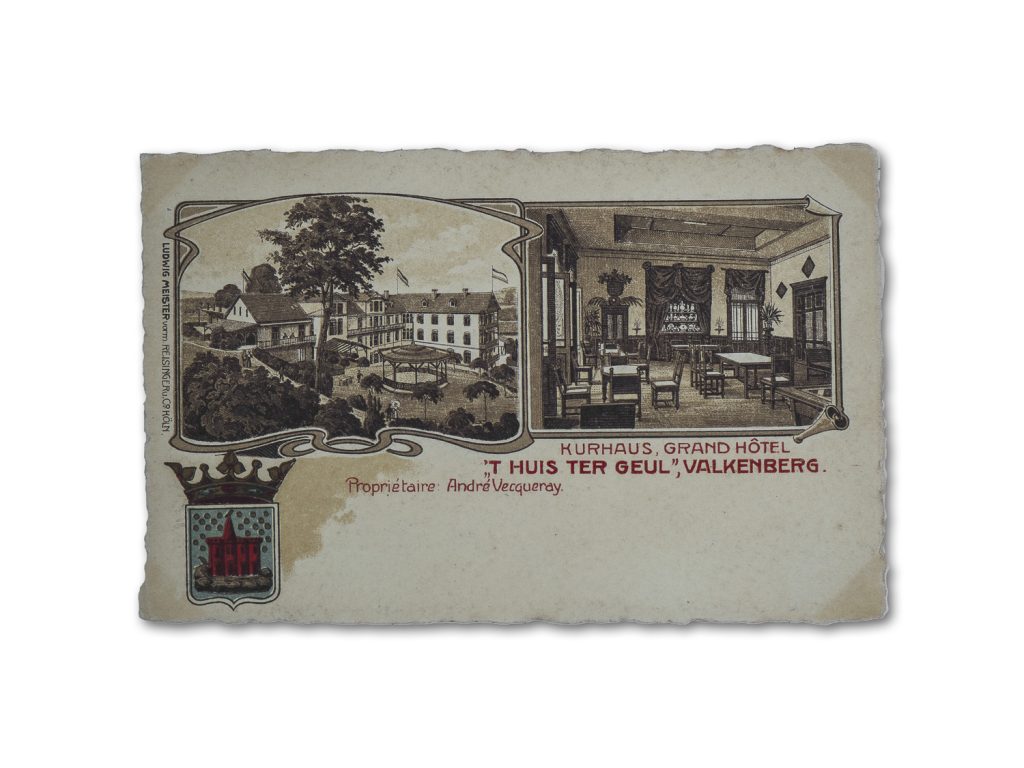
Dr. P.J.H. Pierre Cuypers
architect and State Architect.
Architect Pierre Cuypers does not capture the imagination of many until you know that he was also the architect of the Rijksmuseum and Central Station in Amsterdam.

Construction begins...
Shares of 100, 250 and 500 guilders were issued; the tender took place on September 20, 1890. Under the direction of architect Cuypers, the firm C. van Straaten of Utrecht began construction. Architect Pierre Cuypers was a famous and esteemed architect. He was a state architect and had designed, among other things, the very typical monument in Valkenburg. This was at the foot of the Cauberg. It was to commemorate the 50-year reunification of Limburg with the Netherlands 1839-1889.
This marlstone monument was destroyed on Sept. 29, 1954. A dramatic accident then occurred. A bus with Belgian schoolchildren was coming down the Cauberg. Due to a broken brake system, the bus thundered down and crashed. Fifteen children were killed in the process. This was an accident of unprecedented magnitude for Limburg.
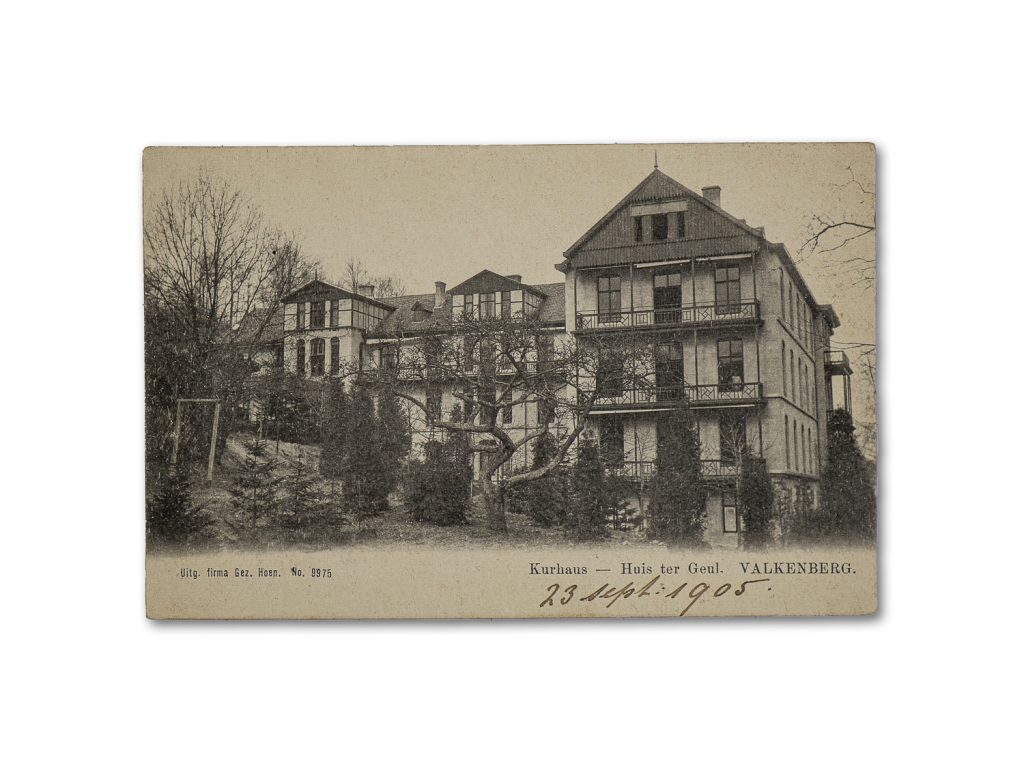
Commissioned in 1892
In June 1892, the “Kurhaus ´t Huis-ter-Geul” was inaugurated. It was a beautiful marlstone building, as we still know it today as the Park Hotel Valkenburg. It is located in the “Geböschke. The beautiful and wooded part of the Heunsberg. The hotel was built against the hillside.
That’s how they described the hotel back then. The superlatives mentioned here are now almost laughable. A chimney connection to the saloons, a steam-powered elevator … We can hardly imagine it now.
“As many as 80 guest rooms (true “halls” by today’s terms) and parlors were built, each with a chimney connection.
Enormous steam and other baths, an elevator with steam traction, magnificent halls on all floors, generous balconies, a dining room, a reading room, a music hall, a conference room, own electricity generation (for Valkeburg did not yet have a public electricity grid), a large park with brilliantly lit garden, kiosk, sports accommodation for lawn-tennis, cricket, soccer, etc., opportunity for guests to hunt and fish – what a luxury!”
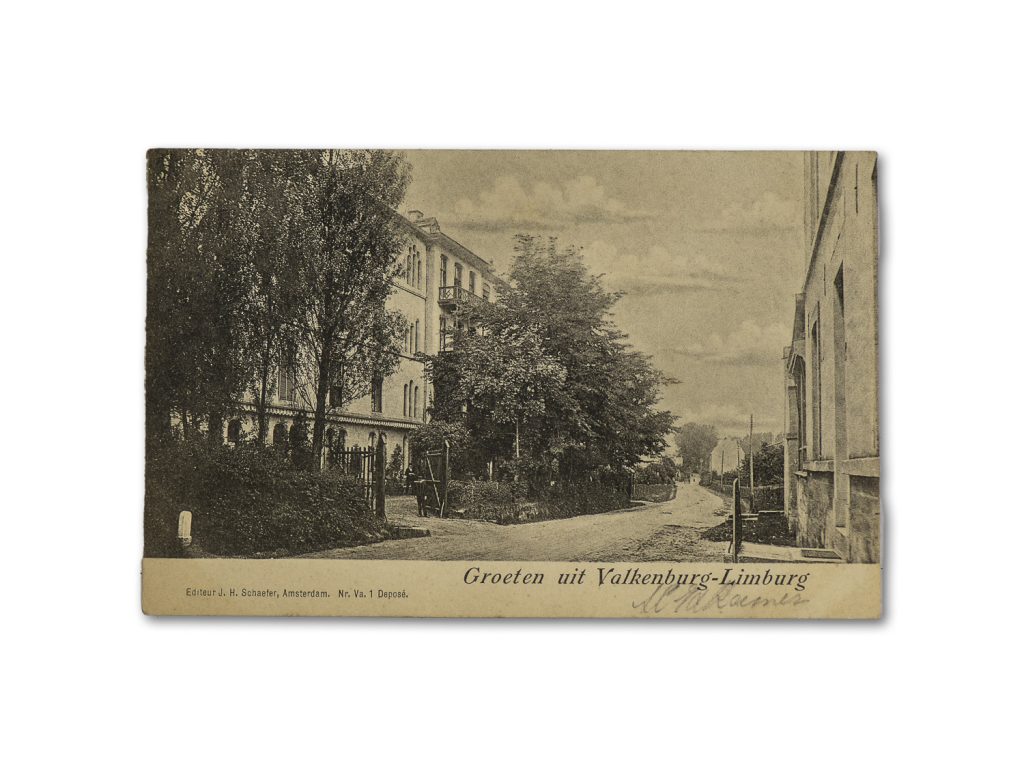
1911 - From spa to hotel and monastery
But as a sanatorium or as a “Kurhaus,” it was not a success. However, the description “rest and convalescent facility” had left room to operate a hotel in addition to a sanatorium. So this was the alternative.
Thus, in the building the “Grand Hotel – Kurhaus Huis ter-Geul” was established, where people were surrounded with every possible luxury in the early 1900s. A room with full board then cost 3.= and 3.50 in the days of the Guilder. For that you got breakfast on the terrace and a 3 or 4 course dinner according to Dutch, German or French cuisine.
As each train arrived at Valkenburg station, a bus was ready to take any guests from the station to the hotel. An unprecedented service and luxury in those days. There was even a dark room set up in the hotel. Here the amateur photographers of the time could finish their pictures. No expense was spared to make guests comfortable. The owner at the time was Mr. André Vequeray.
By operating such a luxury hotel, Valkenburg was ahead of its time. Still, running a spa and later the hotel was not profitable.
In 1911, the hotel suddenly changed its purpose. French Fathers, Redemptorists, who had residence difficulties in France, purchased the property and from then on it seemed lost to tourism. The “French Fathers,” as they were popularly called, had little to no contact with the people of Valkenburg. Sometimes you would see a procession in the park. Otherwise, little recalls that period.

1939 - Parkhotel Rooding
This is the beginning of the “Valkenburg period” in the Rooding family’s life. Johan Rooding worked in several hotels in Valkenburg. Sometimes on permanent duty but also as a “flying keeper. In 1928, he and his wife began taking over Hotel den Halder on the corner of Emmalaan and Koninginnelaan.
In 1934, the Rooding couple ventured an unusual step. They transformed the medieval castle Den Halden in the heart of Valkenburg into a hotel. In addition, so had by now Hotel Hennen, now Hotel Eurlings, on the corner of De Guacostraat and Maternusstraat. This hotel was going to serve as an annex. The little castle was beautiful but had limited capacity
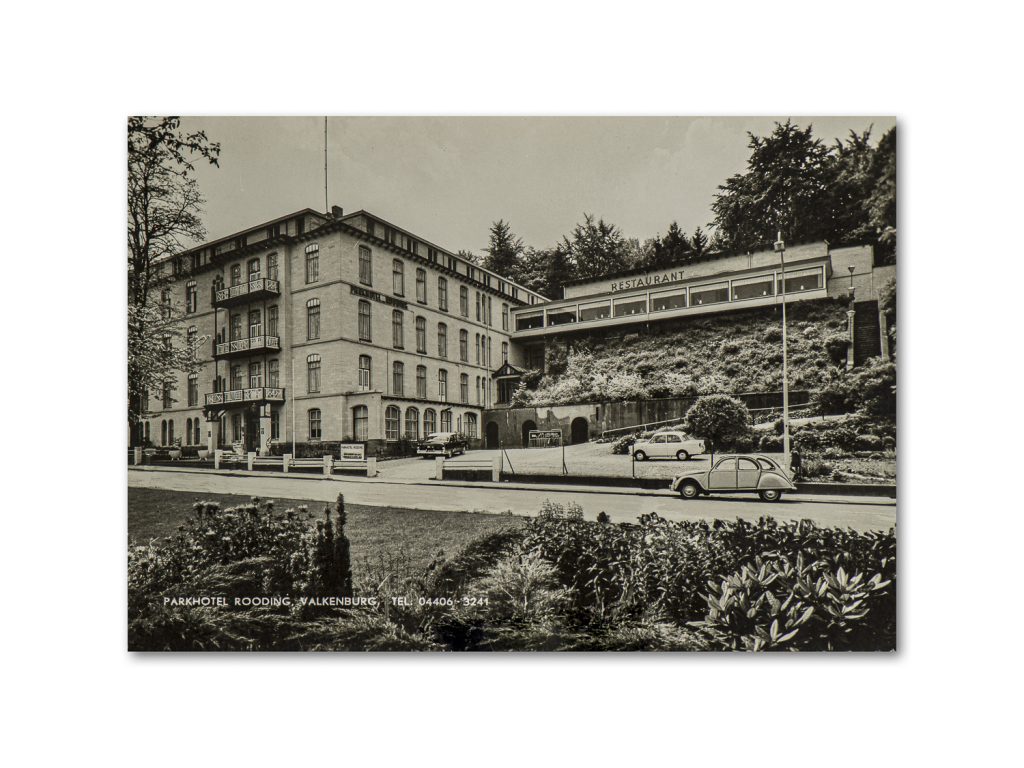
Now who starts a hotel in a monastery?
For 28,000,= guilders, Johan Rooding was able to buy Den Halder Castle at the time. In late 1939, something came to his attention. The fathers were going to leave and Huis ter Geul, today’s Parkhotel Valkenburg, would be for sale! In the early winter of 1940, Mr. Rooding walked with Father Bursar around the “monastery” hidden under a thick layer of snow.
In his imagination, he saw the possibilities for a veritable Park Hotel. He could already see the guests sitting on the terraces and in the conservatories, walking in the spacious corridors, eating in the large dining room. However, especially on the interior, there should be a lot of improvement. The walls were merely painted. The plumbing was poor and in some places there were no more sinks.
Johan Rooding was not to be discouraged. In good spirits, he leased the property with the right to buy. He was actually declared a fool in Valkenburg. Who will start a hotel in that old monastery?
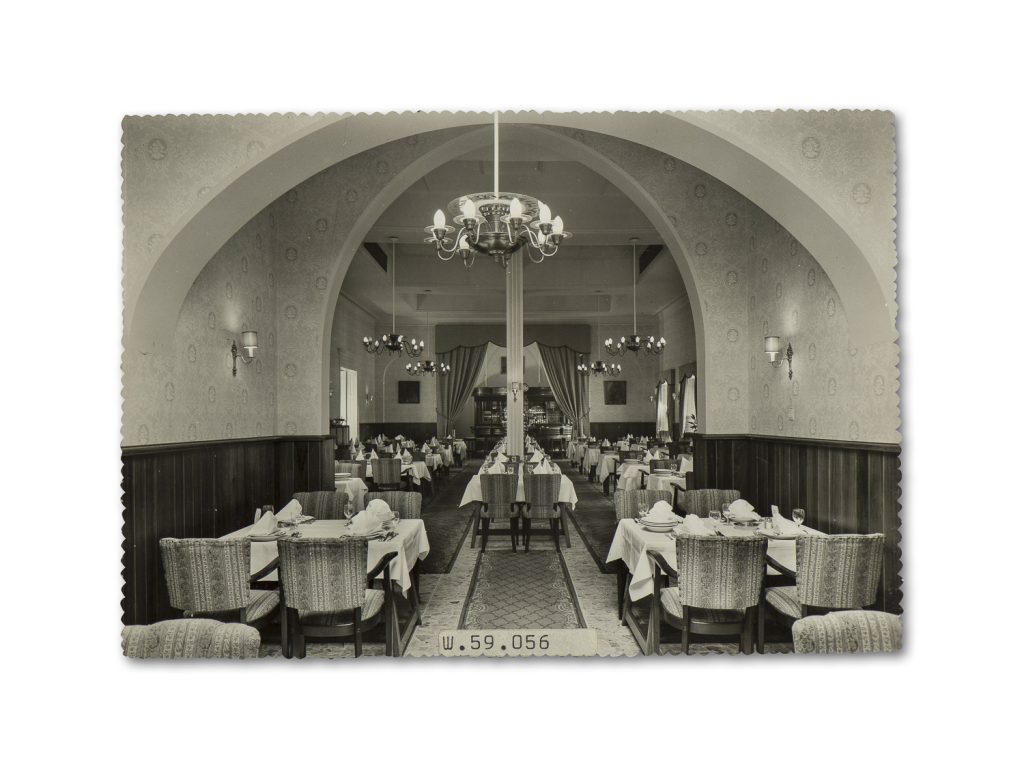
Setback,...the Germans invade Holland.
Hospitality and perfect service in such a lavishly located hotel had to be successful. In that conviction, the Rooding family went to work. Day and night was spent painting, wallpapering, breaking and toiling in the park. There seemed to be no end in sight. But by spring, the main work had been completed. ‘Parkhotel Rooding’ it went by the name.
Another hotel had adopted the name “Huis ter Geul” at the time when the Park Hotel was a monastery. Johan Rooding was looking for continuity. Therefore, he decided to contract with a travel agency. Starting on Whit Monday, May 11, the travel agency would book 30 rooms weekly. This contract is still in the company archives.
However…. On May 10, 1940, the day before the first guests were to move into the new Park Hotel, the Germans invaded our country.
So Johan Rooding and his family certainly did not begin their new phase of life with the wind in their sails. With every success comes setbacks, and the Rooding family managed to hold its own during the difficult war years.
